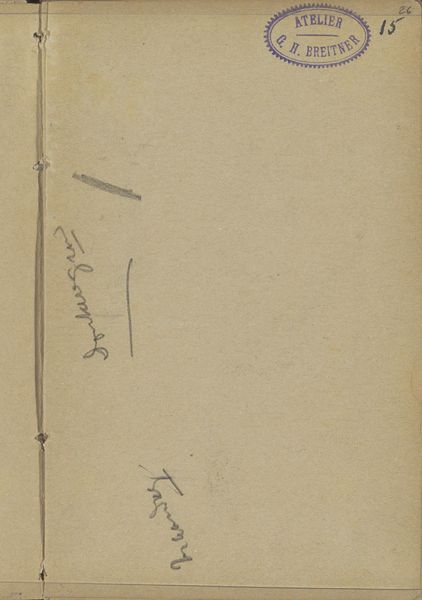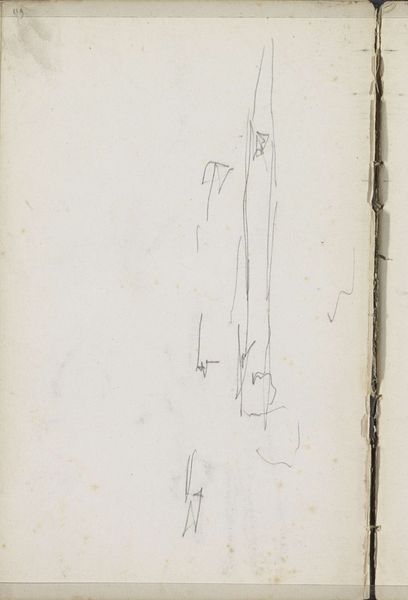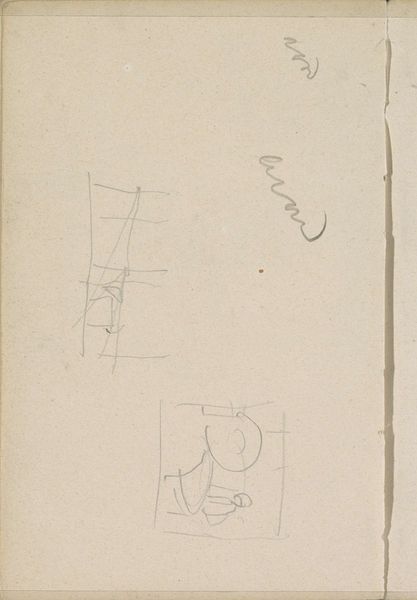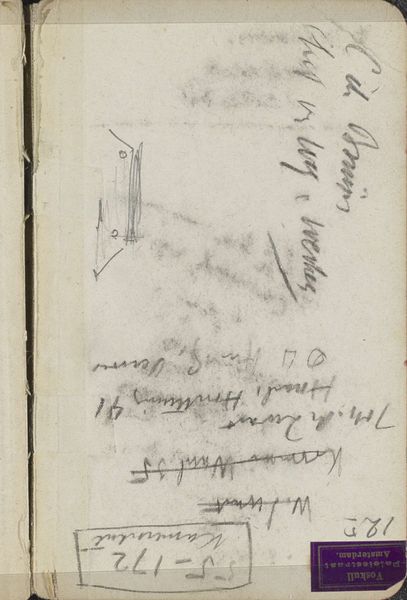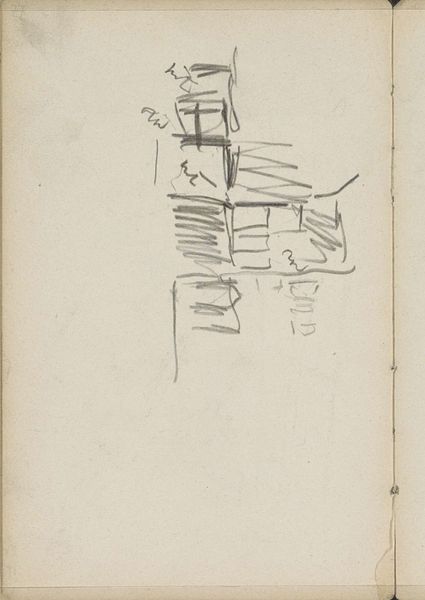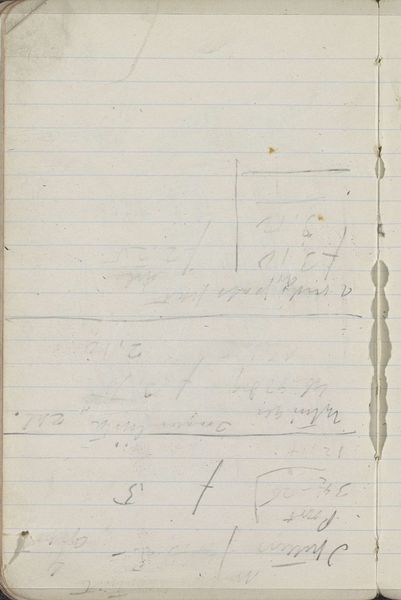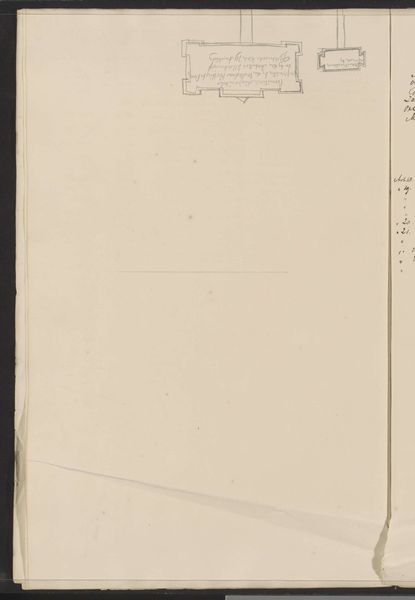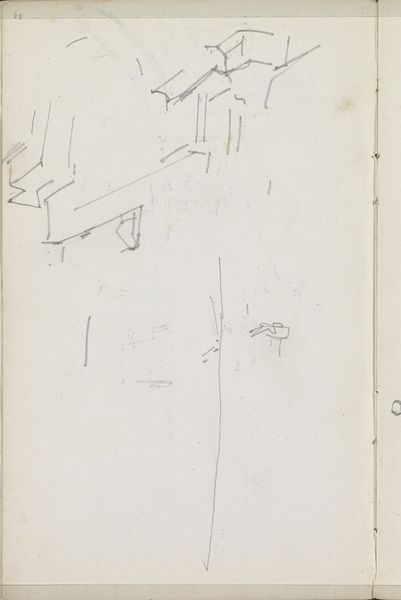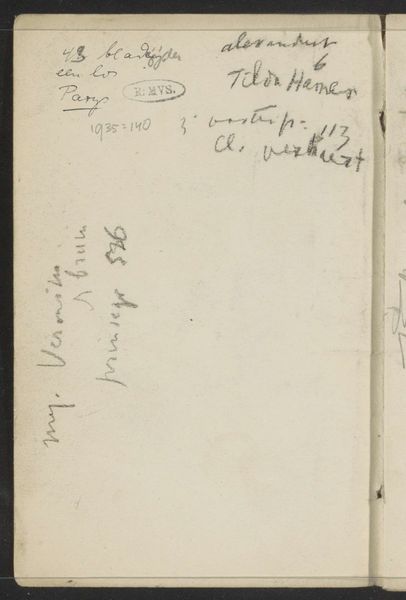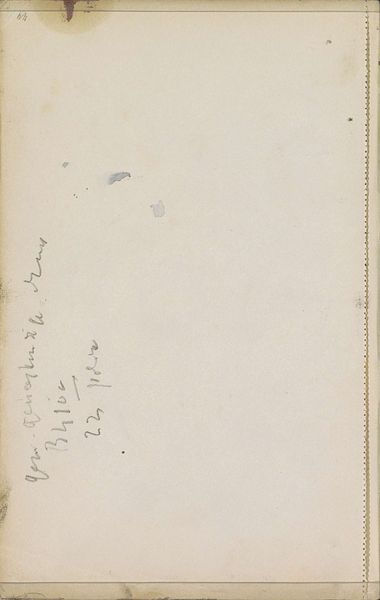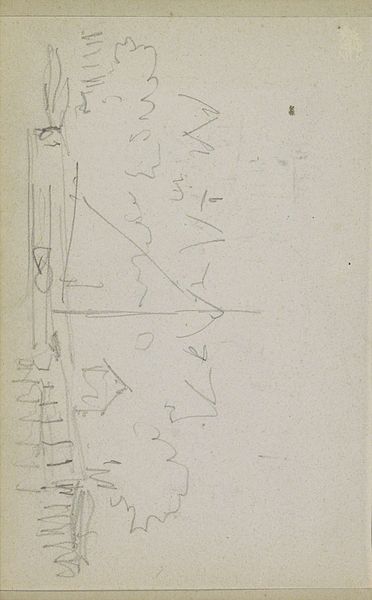
drawing, paper, ink
#
drawing
#
aged paper
#
toned paper
#
hand written
#
ink paper printed
#
sketch book
#
hand drawn type
#
landscape
#
paper
#
personal sketchbook
#
ink
#
geometric
#
sketch
#
ink colored
#
abstraction
#
line
#
sketchbook drawing
#
sketchbook art
#
modernism
Copyright: Rijks Museum: Open Domain
Curator: Here at the Rijksmuseum, we have a drawing titled "Studies en annotaties" by George Hendrik Breitner, created around 1903. It’s an ink drawing on paper, a page torn from what seems to be a personal sketchbook. Editor: Immediately, I’m drawn to the intimacy of it. It feels very immediate, a raw glimpse into the artist's thought process, more so because it is rendered on what looks like aged, almost frail paper. Curator: Indeed. Sketchbooks often serve as visual diaries, capturing fleeting impressions and preliminary ideas. We have the landscape tradition mingling with Modernism here. It's important to remember that Breitner documented a rapidly changing Amsterdam, a place marked by stark class divisions, gender dynamics, and evolving societal norms at the turn of the century. What kind of significance might a seemingly mundane page hold within such a context? Editor: The notations surrounding the sketch draw my attention to possible cultural or symbolic codes within the depicted object—could the handwriting itself be considered a symbol, imbuing this piece with levels of subconscious messaging? How would period-specific calligraphic styles reinforce these messages? Curator: Those coded messages reflect cultural values in handwriting. Moreover, in light of modernity and early 20th-century art history, we see the sketchbook as a site where traditional academic techniques clash with the desire for more expressive modes. Breitner might be grappling with these tensions. His sketches invite a feminist lens as well. Did female models participate and get any benefit? Editor: Fascinating thought, and, if this artwork reflects early modern sensibilities, do these figures—or their surrounding iconography—take on the semblance of cultural and ideological archetypes in service of contemporary political movements and nascent subcultures? It appears more profound than it initially seems. Curator: It does, offering layers upon layers of investigation, and a powerful means for thinking about social stratification and resistance at a pivotal juncture in Amsterdam’s, and the world’s, narrative. Editor: Yes, the piece acts as an artifact capturing personal introspection intertwined with societal reflections—it encourages consideration of how we inherit symbolism as well as experience culture firsthand.
Comments
No comments
Be the first to comment and join the conversation on the ultimate creative platform.
